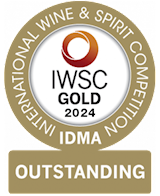TABLE OF CONTENTS
Best Hungarian Spirit Types
Hungarian pálinka is a fruit brandy distilled from various fermented fruit such as plums, apricots, or cherries. The name pálinka has been protected under European Union law, and can only be produced in Hungary from fruit grown within the country’s borders.
Although all varieties must be rested for a minimum of three months, some can be barrel-aged, allowing the fruit flavors to become more prominent and the drink to become more mellow and rounded. Pálinka has to have a minimum of 37.5 ABV, and no flavorings, sweeteners, or colorings are allowed in its production.
VARIATIONS OF Pálinka
Szilvapálinka is a traditional plum brandy from Hungary, and this Szatmári version is one of the esteemed protected varieties. It is made from Penyigei and Besztercei plums, which have to make up at least 80% of the base.
All the plums used in the production of this brandy have to come from the region, and the entire process (mashing, fermentation, distillation, maturation) has to take place in Szabolcs-Szatmár-Bereg County. The resulting drink is clear and colorless, though some versions often attain a distinctive yellow or amber hue during maturation.
The flavor and the aroma are reminiscent of plums. All plum brandies coming from the region have to be rested and oak-aged.
Nagykörűi cseresznyepálinka refers to a cherry brandy (pálinka) that originates from Nagykörű, a region in Hungary. Pálinka is a traditional fruit brandy, and when it's specified as Nagykörűi cseresznyepálinka, it means that this particular variety is made exclusively from cherries grown in the Nagykörű area.
The cherries from Nagykörű are known for their high quality, contributing to the drink's unique characteristics. The production process involves fermenting the cherries and then distilling the fermented fruit to produce the brandy. This process is carefully controlled to maintain the purity and distinct flavor profile of the drink.
MAIN INGREDIENTS
Nagykunsági szilvapálinka is a plum brandy from Jász-Nagykun-Szolnok. It has to be made from the plums grown in the region, and a minimum of 40 % has to be made from Vörös and/or Besztercei plums. The entire production has to take place in the designated region.
The brandy is rested and aged in barrels. It comes in three versions. The first is a standard version that is clear and colorless, dominated by a plum aroma, which is often complemented by spicy and floral nuances. It may have subtle jammy or marzipan-like notes. Érlelt is the matured version that can range from pale to golden yellow.
TABLE OF CONTENTS
TABLE OF CONTENTS
Best Hungarian Spirits
AWARDS

IWSC- International wine & spirit competition - Spirit Gold Outstanding
2024
AWARDS

IWSC- International wine & spirit competition - Spirit Gold
2020
AWARDS

World Gin Awards - Country Winner
2024
AWARDS

World's Best Contemporary Style Gin - Winner
2021
Kalinka vodka is made from the highest quality spirit distilled from grain and pure distilled water, entirely free from minerals. Kalinka owes its unique softness and purity to the noblest traditions of Russian vodka adopted throughout production.
It is filtered ten times through special charcoal obtained from birch which comes from Russia from woods growing in the crystal clear air of the Ural mountains.
AWARDS

IWSC- International wine & spirit competition - Silver
2024
AWARDS

IWSC- International wine & spirit competition - Silver
2024
AWARDS

IWSC- International wine & spirit competition - Spirit Gold
2023
TasteAtlas food rankings are based on the ratings of the TasteAtlas audience, with a series of mechanisms that recognize real users and that ignore bot, nationalist or local patriotic ratings, and give additional value to the ratings of users that the system recognizes as knowledgeable. TasteAtlas Rankings should not be seen as the final global conclusion about food. Their purpose is to promote excellent local foods, instill pride in traditional dishes, and arouse curiosity about dishes you haven’t tried.






